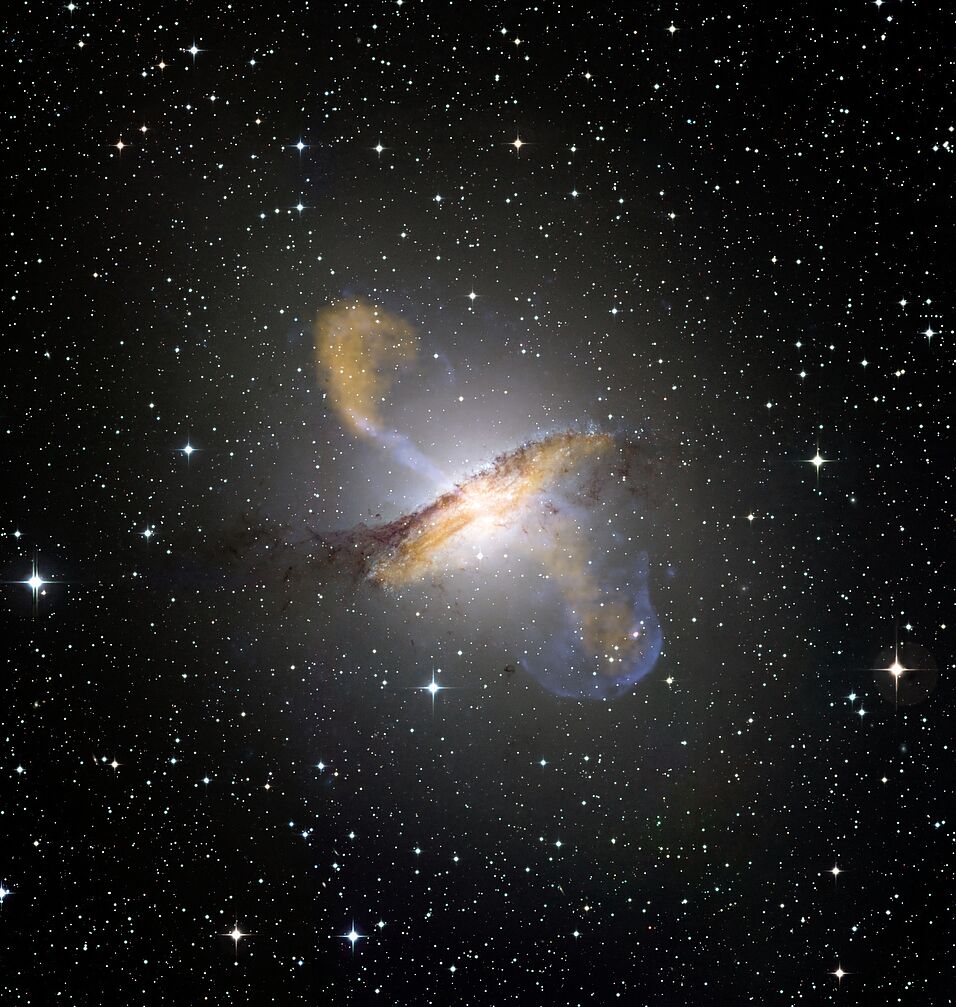Die Milchstraße, die Andromedagalaxie, NGC 6872: Werden wir nach Galaxien befragt, so denken viele von uns zunächst an milchstraßenartige Galaxien mit wunderschönen, riesigen Spiralarmen. In der Tat besitzen Galaxien jedoch die unterschiedlichsten Erscheinungsbilder: Es gibt elliptische Galaxien, Spiralgalaxien, massereiche Galaxien, Zwerggalaxien – um nur einige zu nennen.
Eines aber haben sie gemeinsam: Die meisten Galaxien beherbergen ein sogenanntes supermassereiches Schwarzes Loch in ihrem Zentrum. Schwarze Löcher gehören zu den geheimnisvollsten Gebilden unseres Universums. Nicht umsonst spielen sie häufig eine tragende Rolle in Science-Fiction-Romanen: Objekte, die
so massereich sind, dass sogar Licht ihrer Anziehung nicht mehr entkommen kann. Zweifelte alle Welt noch bis vor kurzem an ihrer bloßen Existenz, so sind Schwarze Löcher und ihre großen Brüder, die supermassereichen Schwarzen Löcher, heutzutage fest in der Forschung integriert.
Gemeinsam wollen wir uns in diesem Vortrag auf eine Reise zu den nächstgelegenen Galaxien machen und lernen, wie man ein ‘dunkles’ supermassereiches Schwarzes Loch überhaupt findet, wie es mit seiner Muttergalaxie interagiert und was wir von der Erforschung supermassereicher Schwarzer Löcher lernen
können.
Der Vortrag findet online statt und kann live auf dem youtube-Kanal des Instituts für Astrophysik verfolgt werden. Den Link finden Sie auf
www.sternwartenaechte.univie.ac.at
oder direkt auf

